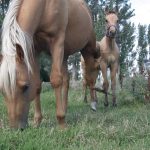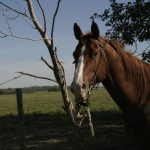
Ignoring growth plates sabotages young horse development
Training plans and workloads for young horses must match their skeletal development, even when they look physically mature from the outside

Weekend warrior horses at risk
Lack of activity followed by intense bursts of exercise increases strain and injury risk in humans; horses are the same

Canada’s slaughter horse industry lacks transparency
Slaughter for horses has a role, but traceability and humane handling must be in play

The art of effective slow feeding for horses
Bring slow feeding into your horse’s routine: How to get started, what to expect and the benefits horse owners can expect to see

Why is my horse shaking its head?
The range of causes for head shaking spans learned behaviour and discomfort from equipment to nerve disorders, head trauma and tumours

Your horse is not your pet
Horses have different care, handling and housing needs compared to other companion species like dogs or cats

Healthy foals need healthy brood mares
Foal well-being starts with a focus on the dam

Max your horsepower: proper fuel for your horse requires proper carbs
Not all carbohydrates are created equal when it comes to feeding horses

Heading off neck pain in horses
Improper handling and headgear can set the stage for neck problems

Treating arthritis in your horse
Treatments for degenerative joint disease can take a whole-horse approach

